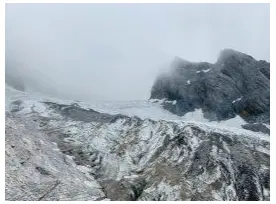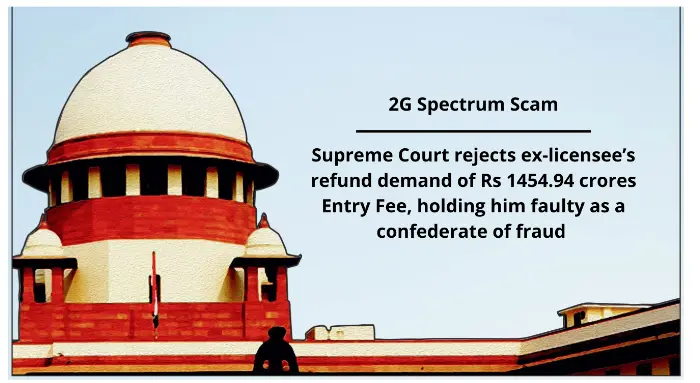Tuesday, 30th April 2024
NABARD's Climate Strategy
In News: Recently, the National Bank for Agriculture and Rural Development (NABARD) launched its Climate Strategy 2030 document, which seeks to tackle India's requirement for green financing.
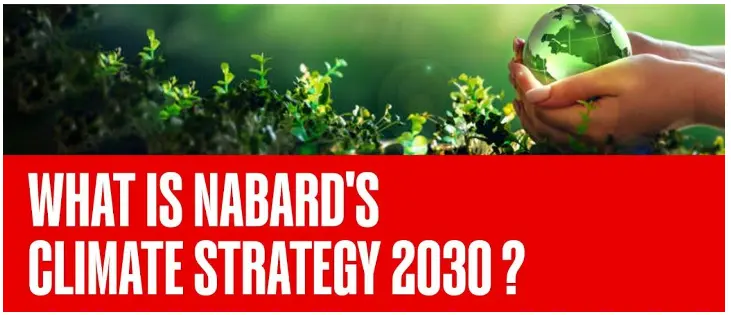
Understanding NABARD's Climate Strategy
- Overview
- NABARD's Climate Strategy 2030 is centered on four main pillars aimed at enhancing green financing across various sectors, fostering a conducive market environment for green finance, adopting sustainable practices within NABARD's operations, and effectively mobilizing resources to support green initiatives.
- Objective
- The strategy aims to address the financial gap between the required investment for sustainable initiatives and the current influx of green finance.
- India's goal of USD 2.5 trillion cumulative investment by 2030 necessitates approximately USD 170 billion annually, but only about USD 49 billion was secured as of 2019-20.
- Moreover, most funds in India focus on mitigation efforts, with a mere USD 5 billion allocated to adaptation and resilience.
Exploring Green Financing
- Definition
- Green financing entails directing financial resources towards investments that yield positive environmental outcomes, including renewable energy projects, energy efficiency initiatives, sustainable infrastructure development, and climate-smart agriculture.
- Importance
- Green financing addresses the imbalance between short-term profit priorities and long-term environmental sustainability by facilitating the transition to a low-carbon economy, promoting climate adaptation and resilience, and unlocking new economic opportunities.
Challenges in Green Financing
- High Initial Costs
- Green projects often require larger initial investments than conventional projects, deterring investors despite their long-term cost savings and environmental benefits.
- Mismatched Timeframes
- Green projects may have longer payback periods that do not align with investors' short-term horizons or financial targets.
- Lack of Standardisation and Greenwashing
- The absence of globally accepted standards for green investment leads to ambiguity and inconsistency in evaluating environmental impact and financial performance, increasing the risk of greenwashing.
Enhancing Green Financing
- AI-powered Risk Assessment
- Developing AI algorithms to accurately assess environmental and financial risks associated with green projects, encouraging traditional financial institutions to engage in green financing.
- Satellite Data-driven Investment Decisions
- Utilizing satellite imagery and data analytics to evaluate the environmental impact of potential investments, providing investors with data-driven insights.
- Green Infrastructure Bonds
- Creating green infrastructure bonds with partial government guarantees to mitigate risk for private investors and promote participation in sustainable infrastructure projects.
- Micro-grants for Grassroots Initiatives
- Establishing micro-grant programs to support local communities in implementing small-scale green projects like rainwater harvesting and solar-powered irrigation.
- Green Impact Scores
- Implementing a system where financial products earn "green impact scores" based on their environmental footprint, empowering consumers to make informed choices.
|
UPSC Previous Year Questions Mains (2021) Q. Explain the purpose of the Green Grid Initiative launched at the World Leaders Summit of the COP26 UN Climate Change Conference in Glasgow in November 2021. When was this idea first floated in the International Solar Alliance (ISA)? |
Source: NABARD
FSSAI's Decision to Increase Pesticide Limits in Herbs and Spices
In News: The Food Safety Standards Authority of India (FSSAI) has recently come under scrutiny for its decision to increase the maximum residue limit (MRL) of pesticides, a move that has stirred controversy among activists and scientists.

What is the Issue Regarding the FSSAI Order?
- Inconsistencies in FSSAI's Previous Stance
- The FSSAI's order contradicts its own previous stance, as acknowledged in April 2022, where it recognized the lack of field trial data for most Indian pesticides and advocated using Maximum Residue Limits (MRLs) established by Codex Alimentarius.
- However, the latest order deviates from this approach for spices and herbs.
- Data Transparency and Reliability
- The maximum residue limit (MRL) of pesticides for food and commodities, including spices and culinary herbs, is specified under the Food Safety and Standards (Contaminants, Toxins and Residues) Regulation, 2011, based on field trial data received through the Central Insecticides Board and Registration Committee (CIBRC), Union Ministry of Agriculture and Family Welfare.
- However, there is an issue of conflict of interest as these studies often come from the pesticide companies themselves.
- Additionally, the Centre's Monitoring of Pesticide Residues at the National Level (MPRNL) checks the amount of pesticide in our food, but it does not test spices and lacks comprehensive data.
- Impact on Consumers and Trade
- Countries with stricter pesticide regulations like Europe have rejected Indian products exceeding their MRLs, as exemplified by recent recalls of Indian food products containing excessive pesticide residues.
- For instance, in April 2024, several popular spice firms in India have been banned in Singapore and Hong Kong for allegedly containing the pesticide 'ethylene oxide' beyond permissible limits.
- Ethylene Oxide is a harmful pesticide unfit for human consumption and whose long-term exposure can cause cancer.
What is Pesticide Poisoning?
- About
- Pesticide is any chemical or biological substance intended to prevent, destroy or control damage from pests which has both agricultural and non-agricultural uses.
- They also pose serious risks to human health and the environment, especially when they are misused, overused, or sold illegally.
- Pesticide Regulation in India
- Pesticides are regulated under the Insecticides Act, 1968 and the Insecticides Rules, 1971.
- The Insecticides Act of 1968 covers the registration, manufacture and sale of pesticides in India.
- The Act is administered by the Department of Agriculture and Farmers Welfare, Ministry of Agriculture and Farmers Welfare.
- Types of Pesticides
- Insecticides: The chemicals that are used to protect plants from insects and pests are known as Insecticides.
- Fungicides: This class of crop protection chemicals is used to control the spread of fungal diseases in plants.
- Herbicides: Herbicides are chemicals that kill or control the growth of weeds in the cultivation area.
- Bio-Pesticides: They are pesticides of biological origin, i.e., derived from animals, plants, bacteria etc.
- Others: This includes plant growth regulators, nematicides, rodenticides and fumigants.
- Concept of Pesticide Poisoning
- Pesticide poisoning is a term that refers to the adverse effects of exposure to pesticides on humans or animals.
- Pesticide exposure can cause adverse health effects including cancer, effects on reproduction, and immune or nervous systems.
- According to the World Health Organization (WHO), pesticide poisoning is one of the leading causes of death among agricultural workers worldwide.
- Types of Pesticide Poisoning
- Acute poisoning occurs when a person ingests, inhales, or comes into contact with a large amount of pesticide in a short period.
- Chronic poisoning occurs when a person is exposed to low doses of pesticide over a long period, which can cause damage to various organs and systems in the body.
What is the Food Safety and Standards Authority of India?
- About
- The Food Safety and Standards Authority of India (FSSAI) is a statutory body formed under the Food Safety and Standards Act, 2006.
- The Food Safety and Standards Act, 2006 replaced acts like the Prevention of Food Adulteration Act,1954, Fruit Products Order, 1955, Meat Food Products Order, 1973.
- It operates under the Union Ministry of Health and Family Welfare.
- Mandate
- The FSSAI has the mandate of regulating the manufacture, storage, distribution, sale, and import of food articles, and also establishing standards to ensure food safety.
- Structure and Organization
- It is made up of 22 members and a Chairperson, where one-third of the members must be women.
- Functions
- Setting Food Safety Standards: It has the power to lay down regulations to implement food safety standards in the country.
- Food Testing Accreditation: It has the power to set up guidelines for the accreditation of food testing laboratories in the country.
- Inspecting Authority Powers: Food safety officers have the right to enter and inspect any place where food products are manufactured, stored, or exhibited.
- Food Safety Research: The Research and Development division of FSSAI is responsible for research in the field of food safety standards. They continuously try to adopt international food standards.
- Identifying Threats: The FSSAI is required to collect data regarding food consumption, contamination, emerging risks, etc.
- Events and Campaigns of FSSAI
- World Food Safety Day.
- Eat Right India.
- Eat Right Station.
- Eat Right Mela.
- State Food Safety Index.
- RUCO (Repurpose Used Cooking Oil).
- Food Safety Mitra.
- 100 Food Streets.
|
UPSC Previous Year Questions Prelims (2018) Q. Consider the following statements:
Which of the statements given above is/are correct? (a) 1 only (b) 2 only (c) Both 1 and 2 (d) Neither 1 nor 2 Ans: (a) Mains (2021) Q.1 Elaborate the policy taken by the Government of India to meet the challenges of the food processing sector. |
Source: DTE
Review of India's Human Rights Accreditation Status by Geneva-based UN-affiliated Organization
In News: The National Human Rights Commission (NHRC) is gearing up to justify its human rights procedures at an upcoming gathering in Geneva.
Review of NHRC's Accreditation Status by GANHRI: Observations and Background
Background
- In 2023, concerns were raised regarding various aspects of the National Human Rights Commission (NHRC), prompting the suspension of its accreditation review.
- These concerns included issues related to the composition procedure, the involvement of police personnel in human rights investigations, and the lack of gender and minority representation within the NHRC.
- As a result, the review process was halted, and the NHRC's performance was scheduled for another assessment on May 1, 2024.
Observations by the Review Committee in 2023
- Lack of Conditions for Independent Operation
- The NHRC was criticized for its failure to establish conditions necessary for operating independently of government interference.
- This lack of autonomy raises concerns about the commission's ability to address human rights violations impartially and effectively.
- Involvement of Police Personnel
- The presence of police officers in NHRC's investigative process was identified as a conflict of interest.
- This involvement could compromise the integrity and impartiality of investigations into human rights abuses, as law enforcement officials may have conflicting interests or biases.
- Lack of Pluralism and Gender Representation
- NHRC's limited gender representation, with only one woman in its top body, raised concerns about the commission's inclusivity and diversity.
- Adequate gender representation is essential for ensuring a balanced and comprehensive approach to addressing human rights issues affecting different segments of society.
- Diversity in Committee Composition
- The review committee noted the absence of representation from India's largest minority religions within the NHRC's composition.
- This lack of diversity undermines the commission's ability to understand and address the unique challenges faced by minority communities in the country.
- Importance of Gender and Minority Representation
- The committee emphasized the significance of gender and minority representation within the NHRC to reflect the diversity of the society it serves.
- Such representation is crucial for ensuring that the commission's decisions and actions are inclusive and representative of all segments of society.
- Impact on Accreditation Status
- The NHRC's compliance with these observations will significantly influence its accreditation status.
- Accreditation status, categorized as 'A' or 'B', affects the NHRC's ability to participate and vote in various international human rights forums, including the UN Human Rights Council and UNGA bodies. Non-compliance with international standards may result in downgrading or suspension of accreditation, limiting the NHRC's influence and credibility on the global stage.
Source: TH
Rupee's Performance over the Past Decade
In News: Between the end of April 2014 and the present, the rupee has experienced a depreciation of 27.6% against the US dollar, declining from Rs 60.34 to Rs 83.38.

Determining the Strength or Weakness of the Rupee: Factors and Measurements
Factors Influencing Rupee's Strength
- Global Trade Dynamics
- India's trade extends beyond the US, involving various countries for both exports and imports.
- Exchange Rates with Global Currencies:
- The rupee's strength or weakness is not solely determined by its exchange rate with the US dollar but also with other currencies worldwide.
Measurement: Effective Exchange Rate (EER)
- Understanding EER
- The EER is computed akin to the consumer price index (CPI).
- Methodology:
- It represents the weighted average of the rupee's exchange rates against major trading partners' currencies.
- Weights are based on countries' shares in India's total foreign trade, akin to CPI's weightage for different commodities.
Types of EER Measures
- Nominal EER (NEER)
- NEER indices are formulated by the Reserve Bank of India (RBI) against both six and 40 currencies.
- The former reflects a trade-weighted average exchange rate against key currencies like USD, Euro, Yuan, Pound, Yen, and Hong Kong Dollar.
- The latter covers a broader basket representing 88% of India's trade flows.
- Real EER (REER)
- It adjusts NEER for inflation differences between India and its trading partners.
- If the nominal exchange rate falls less than domestic inflation, indicating appreciation, it signifies a real appreciation.
Insights from NEER and REER Data
- NEER Trends
- Over the years, the rupee's NEER against both baskets has declined, though less than its depreciation against the US dollar.
- REER Trends
- The rupee has demonstrated real strengthening over time, maintaining a value of 100 or above in 9 out of the last 10 years.
- However, this contrasts with its nominal depreciation against global currencies.
- Implications of REER Increase
- Higher REER indicates rising export costs relative to import prices, potentially impacting trade competitiveness adversely in the long term.
Source: IE
Bogota's Water Rationing
In News: Recently, Bogota, the capital of Colombia, initiated water rationing in response to declining levels in reservoirs.

Addressing the Urgent Need for Land Management and Climate Adaptation
- The current crisis highlights the essential requirement to prioritize land management practices and adapt to changing climate conditions.
- The strain on resources, such as potable water and energy, due to the recent El Nino phase underscores the urgency for collaborative efforts and conservation initiatives.
- Collaborative measures and conservation efforts are crucial to mitigate future risks and ensure sustainable management of resources.
- Bogota, situated on a plateau in the Andes known as the Altiplano Cundiboyacense, stands as one of the highest capital cities globally.
Source: DTE
Miyawaki Plantations
In News: The Embassy of Israel in India, in partnership with a non-profit organization, has formally become a participant in the 'Million Miyawaki' project as part of the Earth Day festivities.
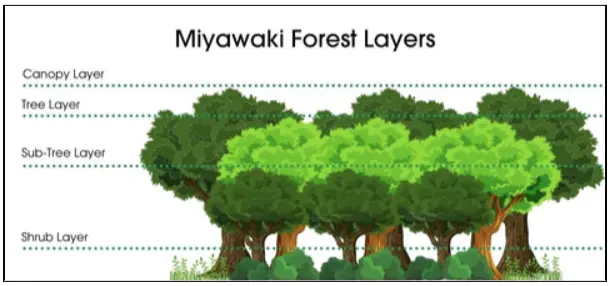
Revitalizing Delhi-NCR's Green Spaces with Miyawaki Plantations
- The project aims to plant a million trees in Delhi-NCR through the creation of 'forest-like' Miyawaki plantations, each comprising 600 trees.
- Named after Japanese botanist Akira Miyawaki, this method involves planting two to four different indigenous tree species within every square meter.
- By promoting self-sustaining tree growth, this approach rapidly increases green cover on small plots, reaching full maturity within three years and minimizing the need for regular maintenance.
- These dense green covers of indigenous trees play a vital role in absorbing dust particles and regulating surface temperatures in the area.
- Earth Day, celebrated annually on April 22nd, serves as a global event to advocate for environmental protection and sustainability.
Source: Outlook
Critical Minerals Summit
In News: The Ministry of Mines is set to host a two-day event titled "Critical Minerals Summit: Enhancing Beneficiation and Processing Capabilities" at the India Habitat Centre in Lodhi Estate, New Delhi.
Critical Minerals Summit Overview
- Organizers: The Ministry of Mines, Government of India, collaborates with the Shakti Sustainable Energy Foundation (Shakti), the Council on Energy, Environment and Water (CEEW), and the Indian Institute of Sustainable Development (IISD).
- Purpose: The summit aims to facilitate collaboration, knowledge sharing, and innovation in critical mineral beneficiation and processing.
- Participants: Diverse stakeholders, including industry leaders, startups, government officials, scientists, academics, and policy experts from India and abroad, will convene at the summit.
- Focus Areas: Addressing the rising demand for Critical Raw Materials (CRMs) crucial for renewable energy systems and electric vehicles, aligning with India's strategic development objectives.
- Key Minerals: Eight key minerals identified by the Ministry of Mines for focus at the summit include Glauconite (Potash), Lithium – Rare Earth Elements (Laterite), Chromium, Platinum Group, Graphite, Tungsten associated with Graphite, Rare Earths (RE), and Vanadium associated with Graphite.
- Dialogue and Workshops: Participants will engage in active dialogue and interactive workshops on critical topics such as mineral auction progress, policy incentives for CRM ecosystem development, and the advancement of commercially viable and environmentally sustainable solutions.
Insights into Critical Minerals
- Definition and Characteristics: Critical minerals are metallic or non-metallic elements essential for modern technologies, economies, or national security, with a risk of supply chain disruptions.
- Applications: They are used in various advanced technologies, low-emission technologies, and common products, including electronics, electric vehicles, wind turbines, solar panels, and stainless steel.
- Examples: Examples of critical minerals include antimony, beryllium, cobalt, lithium, vanadium, and others.
- Top Producers: Leading producers of critical minerals globally include Chile, Indonesia, Congo, China, Australia, and South Africa.
Critical Minerals in India
- Government List: The Indian government has identified 30 critical minerals crucial for the country, including Antimony, Beryllium, Cobalt, Copper, Lithium, Niobium, and others.
Source: PIB
What is Army Tactical Missile Systems (ATACMS)?
In News: The United States recently confirmed providing long-range Army Tactical Missile Systems (ATACMS) to Ukraine to support its war effort against Russia.

About Army Tactical Missile Systems (ATACMS)
- Description: ATACMS is a conventional surface-to-surface artillery weapon system designed to strike targets beyond the range of existing Army cannons, rockets, and missiles.
- Manufacturer: Manufactured by the US defense company Lockheed Martin.
- Designations: Also known as M39 by the US Army and designated as MGM-140 by the Department of Defense (DoD).
- First Use: Saw initial deployment during the 1991 Persian Gulf War.
- Operators: Besides the US, known operators include Bahrain, Greece, South Korea, Taiwan, and the United Arab Emirates.
Features
- ATACMS are 24/7, all-weather, surface-to-surface, inertially guided ballistic missiles.
- Range: Capable of reaching targets up to about 190 miles (305 km).
- Propulsion: Powered by a single-stage, solid propellant engine.
- Launch Platforms: Fired from the High Mobility Artillery Rocket System (HIMARS) and the M270 Multiple Launch Rocket System (MLRS) platforms. The MLRS can launch 12 surface-to-surface missiles in less than a minute.
- Munition Capability: Can carry cluster munitions, releasing hundreds of bomblets to cover a targeted area instead of a single warhead.
- Target Profiles: Targets include air defense artillery sites, surface-to-surface missile units, logistics sites, command and control complexes, and helicopter forward operating bases.
Source: IE
Chambal River
In News: In a recent incident near a jetty in Kota, Rajasthan, the bodies of a man and a woman were discovered in the Chambal River, prompting suspicion of a suicide case.
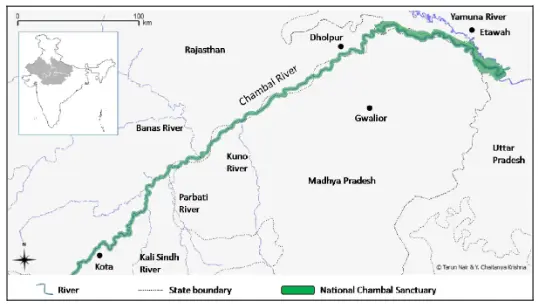
About Chambal River
- Location: An important river in the Malwa plateau, serving as a principal tributary of the Yamuna River within the greater Gangetic drainage system.
- States Flowing Through: Flows through Madhya Pradesh, Rajasthan, and Uttar Pradesh.
- Pollution: Considered one of the most pollution-free rivers in India.
Course
- Source: Rises in the Vindhya Range just south of Mhow, in western Madhya Pradesh.
- Flow: Travels north into southeastern Rajasthan, then turns northeast, passing Kota and along the Rajasthan–Madhya Pradesh border. Shifts east-southeast, forming a part of the Uttar Pradesh–Madhya Pradesh border, before emptying into the Yamuna.
- Length: Total length of 960 km.
- Drainage Basin: Rainfed river with a drainage basin covering an area of 143,219 sq. km. Bordered by the Vindhyan mountain ranges to the south, east, and west, and the Aravalli range to the northwest.
- Tributaries: Main tributaries include the Banas and Mej rivers on the left, and the Parbati, KaliSindh, and Shipra rivers on the right.
Major Dams
- Gandhi Sagar Dam
- Rana Pratap Sagar Dam
- Jawahar Sagar Dam
National Chambal Sanctuary
- Location: Encompasses a significant segment of the Chambal River, from the Jawahar Sagar Dam in Rajasthan to the Chambal-Yamuna confluence in Uttar Pradesh.
- Purpose: Established to restore ecological balance to the river system and provide protection to the highly endangered gharial crocodile.
Source: MD
Raja Ravi Varma
In News: On the occasion of the 176th birth anniversary celebrations of Raja Ravi Varma, the first authentic reproduction of his painting "Indulekha" will be revealed at Kilimanoor Palace, Kerala, the birthplace of the renowned artist in 1848.
About Raja Ravi Varma
- Indian painter and artist born as Ravi Varma Koil Thampuran of Kilimanoor palace, in the princely state of Travancore (Thiruvithankur) in Kerala.
- Considered one of the greatest painters in Indian art history.
- Known for his paintings revolving around Puranas, Mahabharata, Ramayana, and portraits of Indians and British in India.
- Created approximately 7,000 paintings before his death at the age of 58.
- Famous works include Damayanti Talking to a Swan, Shakuntala Looking for Dushyanta, Nair Lady Adorning Her Hair, and Shantanu and Matsyagandha.
Features
- Introduced Western techniques of perspective and composition to Indian subjects, styles, and themes.
- Fusion of European academic art with Indian sensibility and iconography.
- Pioneered the use of oil paints and lithographic reproduction of his work, making it accessible to the public.
- Depicted mythological characters and Indian royalty realistically, challenging traditional artistic norms.
Recognitions
- Won acclaim for an exhibition of his paintings at Vienna in 1873.
- His paintings showcased at the World’s Columbian Exposition in Chicago in 1893, where he received two gold medals.
- Awarded the Kaisar-i-Hind Gold Medal by Viceroy Lord Curzon in 1904, marking the first mention of his name as "Raja Ravi Varma".
Source: TH
How to care for an ageing population
In News: India's elderly population is growing rapidly, expected to surpass 230 million by 2036, doubling from 100 million in 2011. By 2050, it's projected to reach 319 million, making up around one-fifth of the total population.
Adapting Family Dynamics: Addressing the Shift in Family Structure
- Transformation in Household Composition
- The decline in fertility rates and prolonged life expectancy are driving changes, leading to a decrease in the average household size in India from 5.94 in 2011 to 3.54 in 2021.
- With smaller families and an increasing number of elderly individuals prone to chronic illnesses, there's a need to overhaul the health and social care system.
- Blurring Lines Between Social and Health Care
- The evolving family structure blurs distinctions between social and health care, particularly in caring for seniors at home.
- This shift necessitates external assistance in providing home-based care for older individuals.
- Growth of Home-Based Care Industry
- Market projections estimate a significant growth rate of 15-19% annually for the home-based care industry, expected to reach USD 21 billion by 2027 from USD 6-7 billion in 2021.
Significance
- According to a NITI Aayog report, home-based healthcare can potentially substitute up to 65% of unnecessary hospital visits and reduce hospital costs by 20%.
- Services offered at home have expanded to include routine nursing care and specialised services.
Challenges
- Lack of standardized care practices at home.
- Shortage of well-trained caregivers who often face mistreatment from families.
- Absence of grievance redressal mechanisms for users and caregivers.
- High cost associated with hiring caregivers, predominantly provided by the private, for-profit sector.
Strategies for Progress
- Home-Based Healthcare Policy Interventions
- Recognize "home" as a care venue and a workplace for caregivers, ensuring rights and safety for all stakeholders.
- Tailor engagement terms and treatment protocols to suit the home environment.
- Streamline vocational training, roles, and career progression for caregivers.
- Gender Considerations
- Address the specific needs of elderly single women who are often more vulnerable, given the projected increase in their demographic.
- Collaboration Among Ministries
- Foster collaboration among the Ministry of Health and Family Welfare, Ministry of Social Justice and Empowerment, and Ministry of Skill Development and Entrepreneurship to drive necessary reforms.
- Legislative Efforts
- Urgently pass the Maintenance and Welfare of Parents and Senior Citizens (Amendment) Bill, 2019, which regulates home-based care for older individuals and sets minimum standards for service providers.
Conclusion
- While efforts to prepare the youth for the future are essential, equal attention must be given to the elderly population.
- Learning from experiences like Japan, investing in systems to care for older individuals is crucial for economic growth.
- It's also a moral obligation of society to reciprocate the contributions of older individuals by ensuring their well-being beyond their prime years.
|
UPSC Previous Year Questions Prelims (2008) Q. Consider the following statements with reference to Indira Gandhi National Old Age Pension Scheme (IGNOAPS)
Which of the statements given above is/are correct? (a) 1 only (b) 2 only (c) Both 1 and 2 (d) Neither 1 nor 2 Ans: (d) Mains (2022) Q. The increase in life expectancy in the country has led to newer health challenges in the community. What are those challenges and what steps need to be taken to meet them? Mains (2020) Q. In order to enhance the prospects of social development, sound and adequate health care policies are needed particularly in the fields of geriatric and maternal health care. Discuss. |
Source: IE
Share the article
Edukemy’s Current Affairs Quiz is published with multiple choice questions for UPSC exams
MCQ
Get Latest Updates on Offers, Event dates, and free Mentorship sessions.

Get in touch with our Expert Academic Counsellors 👋
FAQs
UPSC Daily Current Affairs focuses on learning current events on a daily basis. An aspirant needs to study regular and updated information about current events, news, and relevant topics that are important for UPSC aspirants. It covers national and international affairs, government policies, socio-economic issues, science and technology advancements, and more.
UPSC Daily Current Affairs provides aspirants with a concise and comprehensive overview of the latest happenings and developments across various fields. It helps aspirants stay updated with current affairs and provides them with valuable insights and analysis, which are essential for answering questions in the UPSC examinations. It enhances their knowledge, analytical skills, and ability to connect current affairs with the UPSC syllabus.
UPSC Daily Current Affairs covers a wide range of topics, including politics, economics, science and technology, environment, social issues, governance, international relations, and more. It offers news summaries, in-depth analyses, editorials, opinion pieces, and relevant study materials. It also provides practice questions and quizzes to help aspirants test their understanding of current affairs.
Edukemy's UPSC Daily Current Affairs can be accessed through:
- UPSC Daily Current Affairs can be accessed through Current Affairs tab at the top of the Main Page of Edukemy.
- Edukemy Mobile app: The Daily Current Affairs can also be access through Edukemy Mobile App.
- Social media: Follow Edukemy’s official social media accounts or pages that provide UPSC Daily Current Affairs updates, including Facebook, Twitter, or Telegram channels.

